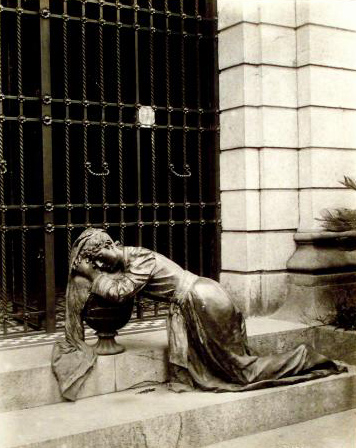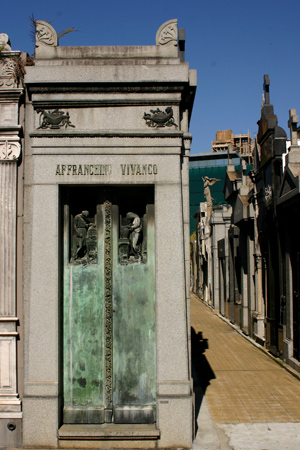
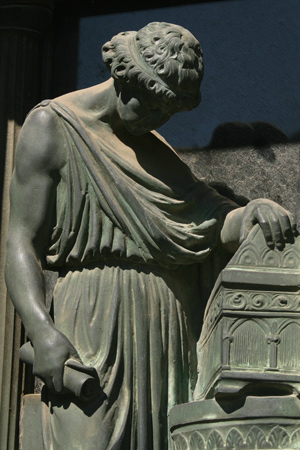
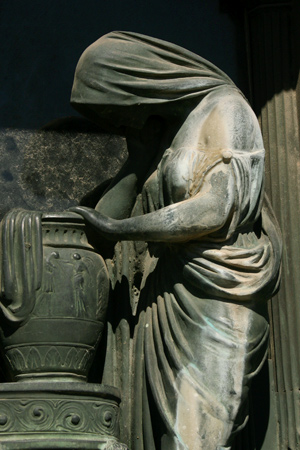
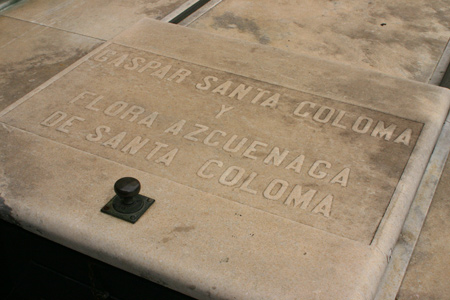
Fortunes come & fortunes go. Perhaps that’s why a simple marker is the only decoration on the resting place of one of the most influential businessmen in early Argentine history.
Gaspar de Santa Coloma immigrated from the Basque Country to Buenos Aires in 1768 at the age of 26. After marrying Flora de Azcuénaga, he became a leading figure & benefactor to the Azcuénaga family… even arranging a marriage between a close cousin & Flora’s brother, Miguel de Azcuénaga. Making a fortune based on trade with Spain, Santa Coloma sponsored & assisted others coming from his Basque homeland. Martín de Álzaga saw Santa Coloma as a father figure, lived & worked with him from the ages of 12 to 22, & was given a large sum of money by Santa Coloma to start his own business.
Gaspar de Santa Coloma & his protegé Martín de Álzaga were among the richest men in Buenos Aires when independence was declared from Spain in 1810. Their close ties to Spain put them at odds with the revolutionaries, & both men were viewed as a threat. The First Triumvirate sentenced Martín de Álzaga to death, but Santa Coloma avoided the execution squads at the cost of his fortune. His close relationship with Miguel de Azcuénaga—who formed part of the Primera Junta—likely helped him as well. Santa Coloma died in 1815 with little money or prestige, a casualty of revolutionary times.
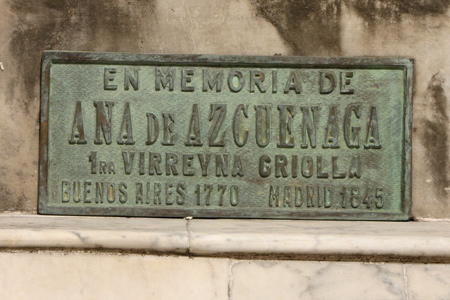
Strong ties to the Azcuénaga clan are also visible on a plaque dedicated to Miguel de Azcuénaga’s sister, Ana. Born in Buenos Aires, she was the first local to marry a Spanish Viceroy. Antonio de Olaguer y Feliú ruled from 1797 to 1799. Both Antonio & Ana went to Spain after the revolution & died there. It is unclear if Ana’s remains were eventually returned to Buenos Aires & placed here.
2 Comments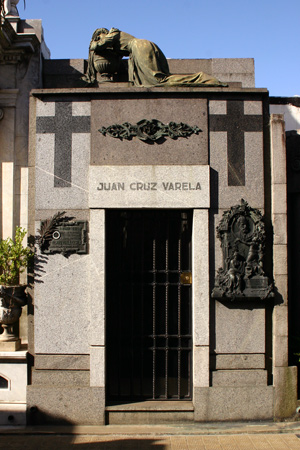
Born in Buenos Aires in 1794, Juan Cruz Varela was sent by his parents to Córdoba to become a priest. But Varela completed his studies in 1816 just as Argentina won its independence from Spain & so chose to participate politics & literary ventures instead. Many scholars have classified his odes & tragedies as the best early Argentine literature written. Works often tackled the topics of the day, mainly the revolutionary wars & struggles of the new nation. In “Canto lírico al triunfo de Ituzaingó,” Varela describes General Carlos Alvear‘s victorious battle against Brazil & later wrote a eulogy for Manuel Belgrano:
¿Oh, dónde habitas, militar guerrero?
¿Cómo te fuiste, y huérfana dejaste
tu amada patria, que a la vez libraste
con los cortantes filos de tu acero?Cómo le has dado el golpe postrimero,
e insensible a su llanto te ausentaste,
abandonando al último contraste
su libertad, su honor, su bien entero.Que se encienda de nuevo, que se encienda
la antorcha de tu vida. Y si es en vano
nuestro justo clamor en la contiendade tu afligida patria, pon la mano
sobre quien te suceda, y la defienda.
¡Pero quien te sucede, gran Belgrano!
As a friend & admirer of first President Bernardino Rivadavia, Varela was forced into exile with Rivadavia’s political defeat & the rise of Rosas. He died in Montevideo in 1839, & his remains were brought to Recoleta Cemetery after the defeat of Rosas.
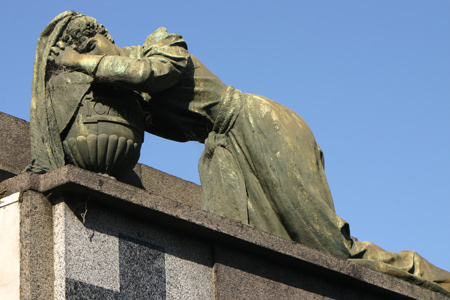
An equally interesting descendant of Varela also buried in the family tomb is Dalmiro Varela Castex. A large plaque hints to his importance:
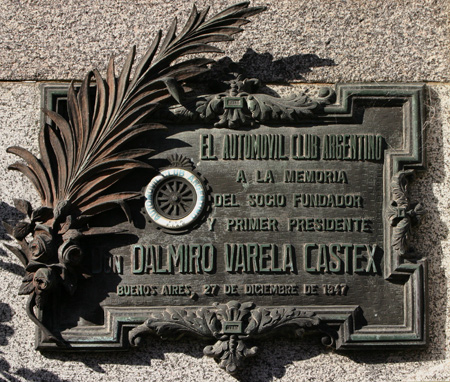
Dalmiro imported the first vehicle to Argentina in 1888, a steam-powered De Dion Bouton tricycle. In 1895 he imported a petrol-powered Benz four-wheeled vehicle & sold the tricycle to Marcelo T de Alvear. Importing & selling vehicles would become Dalmiro’s passion. In 1904, he founded the first automotive group, the Automovil Club Argentino (ACA) & was issued the first driver’s license in the nation:
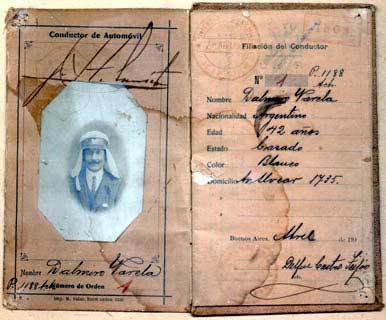
For more info on Dalmiro & the history of automobiles in Argentina, Daniel Costa Deschamps has written an interesting memoir on the topic (in English). Above photo courtesy of prewarbuick.com. This tomb was declared a National Historic Monument in 1946.
Update (08 Feb 2012): Apparently this tomb was downsized. Part of the original gate was maintained & the mourning woman statue placed on top of the whole structure. It’s always looked a bit odd to me & thanks to photo #371 of the Witcomb Collection now I understand why:
